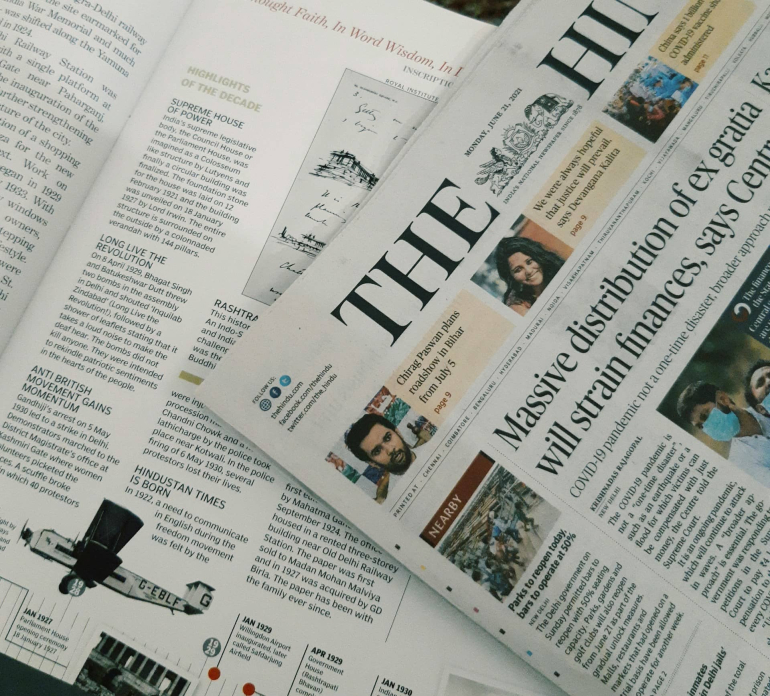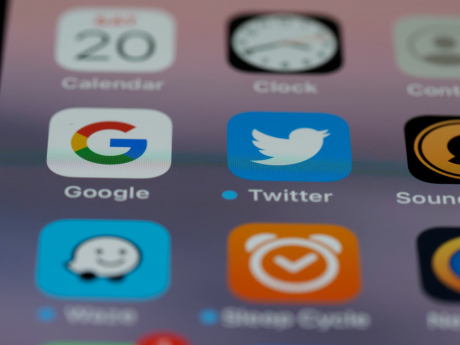For decades, the advertorial sat on the margins of respectability—an awkward hybrid of journalism and marketing, too promotional for purists and too subtle for traditional advertisers. But in the digital economy, where attention is scarce and trust is even scarcer, advertorials have re-emerged as a potent strategic tool.
While the media are full of algorithmic noise and clients experience advertising fatigue, smart brands are turning to editorial-style content to do what conventional ads can no longer accomplish: tell a story, build a reputation, and create affinity that leads to conversion. Advertorials—branded content designed to inform, influence, and inspire within an editorial framework—have become the branding instrument of choice for luxury players, emerging tech firms, and high-trust B2B operators alike.
This article explores the evolving role of advertorials in strategic brand-building and client acquisition, examining their effectiveness, execution, and return on investment.

Table of Contents
- What Are Advertorials?
- For What Companies Do Advertorials Work Best?
- What Makes an Advertorial Different—And Why It Works
- The ROI of Advertorials—Not Always Immediate, But Often Outsized
- Advertorials in Action—Best Practices from the Field
- Advertorials and the Luxury Advantage
- Common Pitfalls and How to Avoid Them
What Are Advertorials?
Advertorials are a hybrid form of media: a strategic blend of advertisement and editorial content. Unlike display ads or sales copy, advertorials are designed to inform and persuade within the style, tone, and structure of journalistic writing. Their aim is not just to sell a product or service, but to position the brand as a credible contributor to a broader conversation—be it about innovation, leadership, sustainability, or culture.
A well-crafted advertorial reads like thought leadership, offers insight or analysis, and presents the brand as a solution to a relevant problem—often without overtly promoting itself. The line between marketing and storytelling is blurred intentionally. The goal is not interruption, but immersion.
As traditional advertising loses trust and attention spans dwindle, advertorials represent a subtler, more intellectually engaging route to brand-building. They serve as credibility-enhancing vehicles that benefit from the host publication’s editorial authority while giving brands full control over the narrative.
Back to topFor What Companies Do Advertorials Work Best?
1. High-Trust, High-Consideration Businesses
Companies offering products or services that require a longer decision-making process—such as executive education, consulting, financial services, legal advisories, or enterprise software—benefit greatly from advertorials. These sectors rely less on impulse and more on perceived credibility, depth, and expertise. An advertorial allows such firms to showcase knowledge, perspective, and industry alignment—traits that convert cautious prospects into confident clients.
As The Economist might phrase it: “In markets where trust is currency, advertorials are minting it.”
2. Luxury and Premium Brands
Luxury thrives on mystique, heritage, and storytelling. Conventional ads often cheapen the experience. Advertorials, by contrast, allow high-end brands—whether in fashion, hospitality, fine jewelry, or design—to build narrative around craftsmanship, exclusivity, and artistry. The result is a controlled message that elevates rather than dilutes the brand.
Here, the advertorial becomes less about driving traffic and more about shaping perception. A brand positioned as an editorial subject appears less transactional and more aspirational.
3. Innovators and Emerging Startups
Startups—especially in sectors like tech, biotech, fintech, or sustainability—can use advertorials to define a category, educate a market, or legitimize a new product. When an unknown company is featured in a serious journalistic tone—sharing insight, not hype—it fast-tracks reputational capital.
This is particularly effective for startups entering competitive markets where brand trust and thought leadership can tip the scale, even before full market adoption.
4. Mission-Driven or Purpose-Led Organizations
Nonprofits, think tanks, ESG funds, or social enterprises benefit from advertorials because their value proposition often goes beyond the transactional. They must educate, inspire, and align with deeper values. An advertorial offers space to explore these themes—climate resilience, gender equity, or ethical sourcing—while gently building brand recognition and affinity.
5. B2B Companies with Niche Offerings
For niche B2B companies that cannot rely on mass advertising due to the specificity of their audience, advertorials provide a surgical strike. A whitepaper-style feature in a respected trade or industry publication is not noise—it’s signal. In these cases, the goal is not virality, but velocity within the right networks.
In essence, advertorials work best not for those seeking immediate conversions, but for those building lasting influence. They reward companies that have something to say—not just something to sell.
Back to topAs HBR might conclude: “Advertorials are not a replacement for performance marketing; they are a strategic complement—ideal for companies where reputation is a prerequisite to growth.”
What Makes an Advertorial Different—And Why It Works
1. From Exposure to Meaningful Engagement
Traditional advertising prioritizes reach; advertorials prioritize relationship. By mimicking the voice and style of editorial content, a well-crafted advertorial invites readers into a narrative—not a transaction. The brand’s message is seamlessly woven into themes that matter to the reader: innovation, leadership, style, or personal transformation.
A McKinsey study from 2022 revealed that 71% of consumers say they are more likely to trust a brand that “educates them rather than sells to them.” This is precisely the space that advertorials occupy: they are not interruptions, but contributions.
Where display ads aim for seconds of attention, advertorials can command minutes—creating brand impressions that compound over time.
2. A Platform of Borrowed Authority
An advertorial published in The Financial Times or Vogue does more than share content—it confers credibility. When brands align with trusted publications, they benefit from borrowed authority: the editorial reputation of the outlet bolsters the perceived seriousness of the message.
This dynamic can be decisive for early-stage firms looking to move upmarket or luxury brands seeking to preserve mystique. Unlike native social media content—which lives in a saturated feed—advertorials in legacy or niche publications often carry a quiet prestige.
In effect, an advertorial is not just content. It is a signal—a brand’s declaration that it belongs in the cultural conversation.
Back to top
The ROI of Advertorials—Not Always Immediate, But Often Outsized
1. High-Touch, Long-Tail Impact
A common objection to advertorials is cost. Unlike performance ads on Google or Facebook, where marketers can track cost per click or conversion, advertorials operate in a more qualitative domain. But this is not a weakness; it is their strategic strength.
Advertorials often generate “halo effects”: long-lasting brand equity, improved recall, and increased trust that influence decision-making over months—not minutes.
In a 2021 whitepaper by the Content Marketing Institute, brands that used editorial-style storytelling saw:
-
3x higher engagement rates on social media
-
27% more inbound inquiries from B2B prospects
-
22% longer average site session duration when traffic originated from advertorial placements
The message is clear: advertorials attract readers who stay longer, consume more, and convert at higher trust levels.
2. From Awareness to Aspiration
While ads remind, advertorials inspire. This is especially vital in high-consideration markets—executive coaching, boutique finance, luxury fashion—where clients are not only buying products, but also buying into an identity.
Take the example of The Business of Fashion, which offers editorial-style sponsorships. A niche D2C luxury brand might never afford TV advertising or a Vogue cover. But a sharp, insight-driven advertorial on sustainability, fashion, and Gen Z buyers—signed by the founder—can place that brand in front of global investors, talent, and customers who value intellect and purpose.
Advertorials convert not just leads—but belief.
Back to top
Advertorials in Action—Best Practices from the Field
1. Don’t Just Tell. Teach.
Advertorials that succeed don’t merely promote—they provide insight. The most effective ones resemble high-value thought leadership. A fintech firm might explain the future of digital wallets. A leadership coach might break down psychological safety in remote teams. A luxury skincare brand might explore the science of skin aging.
In every case, the content earns its space.
The best advertorials follow the classic journalistic pyramid:
-
A powerful headline
-
A compelling lede (hook)
-
Authoritative insight or narrative
-
A subtle but persuasive call to action
Remember: the goal is not to sound smart. It’s to create trust through value.
2. Authenticity Over Overdesign
The temptation with advertorials is to over-polish them. Glossy language, extravagant claims, and exaggerated imagery can turn readers off. The most credible advertorials sound like editorials—with a dash of branded intent.
In 2023, Harvard Business Review ran a sponsored article by a consulting firm on the future of hybrid work. The piece led with data, cited industry studies, and offered actionable frameworks. The sponsor’s name appeared only at the end, with an invitation to download a white paper.
The piece went viral. Not because it sold—it served.
This is the golden rule of effective advertorials: serve before you sell.
3. Align with the Right Media Partner
Not all advertorials are created equal. Where and how your content appears matters as much as what it says.
Top-performing brands are increasingly working with niche, mission-aligned publications—BUSINESS POWERHOUSE, Luxury Briefing, TechCrunch+, or even independent newsletters with high trust and low noise. The editorial context sets the tone.
Avoid scattershot placements. Instead, consider:
-
Audience alignment (are these your buyers?)
-
Editorial credibility (does the platform have cultural capital?)
-
Format flexibility (do they allow multimedia, expert quotes, SEO optimization?)
A single high-quality placement in a respected niche outlet often outperforms dozens of mediocre ones.
Back to top
Advertorials and the Luxury Advantage
1. Premium Brands Need Premium Stories
In the luxury market, perception is everything. But traditional advertising has lost its allure—today’s affluent consumers are over-marketed and underwhelmed. They crave narrative. Legacy. Depth.
Advertorials are tailor-made for this.
Consider the LVMH approach. While the conglomerate rarely advertises in the conventional sense, its maisons are master storytellers. A limited edition watch isn’t just a timepiece—it’s a tribute to horological heritage. A perfume isn't just fragrance—it's a memory, bottled.
Advertorials allow luxury brands to expand on this mythology in editor-approved form. They provide a platform to showcase artisanship, sustainability practices, or the inspiration behind a new line—all without breaking character.
As The Economist put it, “In the luxury world, the story is the product.”
2. Advertorials as Gateways to Influence Markets
For consultants, designers, boutique law firms, or gallery owners, advertorials are a backdoor into elite circles.
An “Editor’s Feature” on “Women Redefining Leadership” that includes your boutique consultancy not only reaches potential clients—it sends a meta-signal to peers, recruiters, and the media: you are part of the conversation.
This halo effect makes advertorials an excellent earned media catalyst. Journalists may reference them. Conferences may invite you. Investors may notice.
That’s not an ad—that’s clout.
Back to top
Common Pitfalls and How to Avoid Them
1. Overpromoting the Brand
If the first sentence of your advertorial is about your product, you’ve already lost. Readers smell desperation. To succeed, begin with insight, not inventory. Offer value upfront. Let the brand emerge naturally, as a solution or visionary within a bigger trend.
2. Choosing the Wrong Platform
Vanity placements in large media brands with no editorial coherence or alignment dilute your voice. Focus on platforms where:
-
Your ideal clients actually read
-
Your tone fits the editorial voice
-
Your message won’t be lost in a sea of low-quality sponsored content
3. Not Measuring Soft ROI
Just because advertorials are long-game tools doesn’t mean they’re unmeasurable. Track:
-
Branded search volume (are people Googling you more?)
-
Newsletter signups or downloads
-
Quality of inbound leads (“We saw your feature in...”)
Soft ROI often turns into hard results—slowly, then suddenly.
Conclusion: Why the Future of Branding Is Editorial
As the digital landscape grows noisier, the appetite for substance over splash continues to rise. Consumers and clients don’t want to be sold to; they want to be spoken with.
Advertorials—when done right—offer exactly that. They turn branding into storytelling. They turn promotion into perspective. And they turn cold leads into warm conversations.
In the final analysis, the power of advertorials lies not in their ability to persuade, but in their ability to position. A brand that educates, elevates, and enriches the editorial conversation will always win more than attention. It will win respect—and with it, loyal clients.
Back to topBUSINESS POWERHOUSE is a media platform that amplifies visionary voices in business, finance, marketing, technology, leadership, art and culture. We create space for brands that create the future. To learn more about advertorial partnerships, visit www.business-powerhouse.com/partner-with-us.







Comments